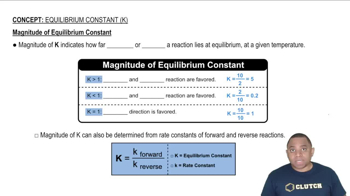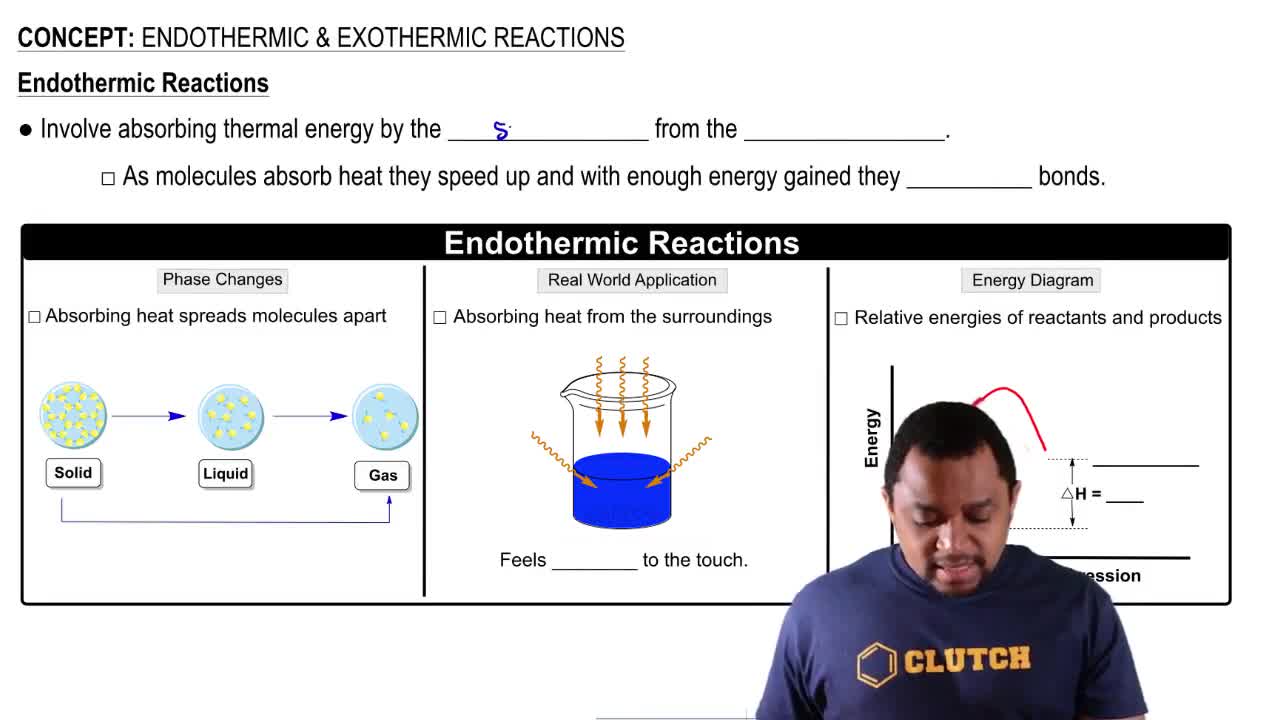Here are the essential concepts you must grasp in order to answer the question correctly.
Le Chatelier's Principle
Le Chatelier's Principle states that if a dynamic equilibrium is disturbed by changing the conditions, the system will adjust to counteract the change and restore a new equilibrium. This principle helps predict how changes in temperature, pressure, or concentration will affect the position of equilibrium in a chemical reaction.
Recommended video:
Temperature and Equilibrium Constant
The equilibrium constant (K) of a reaction is temperature-dependent. For exothermic reactions, increasing the temperature typically decreases K, while for endothermic reactions, increasing the temperature usually increases K. Understanding the nature of the reaction (exothermic or endothermic) is crucial to predicting how K will change with temperature.
Recommended video:
Magnitude of Equilibrium Constant
Exothermic and Endothermic Reactions
Exothermic reactions release heat, resulting in a negative change in enthalpy (ΔH < 0), while endothermic reactions absorb heat, leading to a positive change in enthalpy (ΔH > 0). The classification of a reaction as exothermic or endothermic is essential for determining how the equilibrium constant will respond to temperature changes.
Recommended video:
Endothermic & Exothermic Reactions
 Verified step by step guidance
Verified step by step guidance


